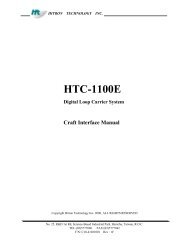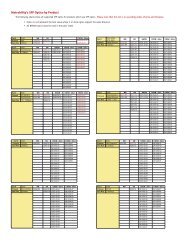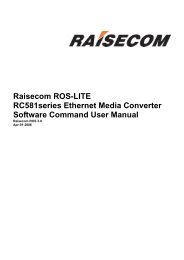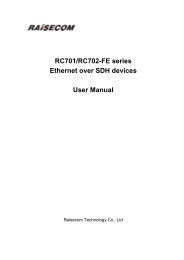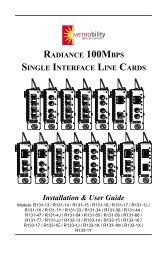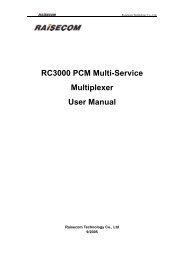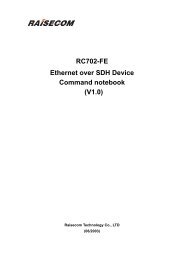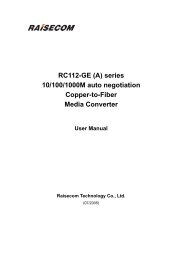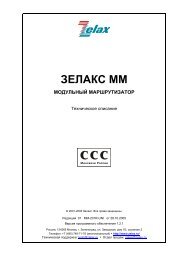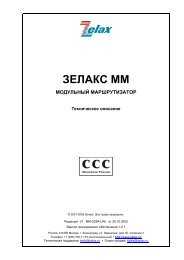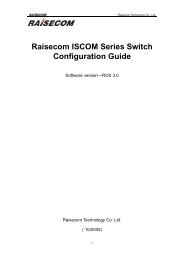OMS 3250
OMS 3250
OMS 3250
- No tags were found...
You also want an ePaper? Increase the reach of your titles
YUMPU automatically turns print PDFs into web optimized ePapers that Google loves.
<strong>OMS</strong><strong>3250</strong>Product Description9.5 Sub-network connection protectionThe "Sub-Network Connection Protection" is defined in ITU-T Rec. G.803 and ITU-T Rec.G.841.When <strong>OMS</strong><strong>3250</strong> systems are connected in a subnetwork (e.g. a ring topology) the relevant VC-4 of the signal to be protected can be protected, by transmitting it from the input tributary to twooutput interfaces. At the receive side, the available or better-quality signal is selected.The switching between the two directions is based on the following criteria:• AU-AIS and AU-LOP alarms at the VC level (inherent monitoring);• Error performances (BIP information), payload and routing correctness (Unequipped Signaland Trace Identifier) at the VC level (non intrusive monitoring);• Command from the Local Terminal or from Element Manager.In this way, the channel is protected against any single failure in the subnetwork.The following ODUk protection architectures are supported:• 1+1 unidirectional SNC/Nand SNC/IIn these architectures, a permanent bridge is utilised at the transmit end. At the receiverend, a protection switch is realized by selecting one of the signals based on purely localinformation.For protection switching criteria, non-intrusive (SNC/N) or server layer (SNC/I) monitoringshall be used.• 1+1 bi-directional SNC/Nand SNC/IIn these architectures, a permanent bridge is utilised at the transmit end. At the receiveend, a protection switch is realised by selecting one of the signals based on local or remoteinformation. For protection switching criteria, non-intrusive (SNC/N) or server layer (SNC/I)monitoring is used.These types of protection use the automatic protection switching protocol (APS).• 1:N an SNC/I protectionIn this architecture N working subnetwork connections that are to be protected share anadditional subnetwork connection for protection purposes. In a normal condition, thisprotection capacity can be used to carry lower priority “extra traffic”. This extra traffic itself isnot protected and is to be replaced by higher priority working traffic under failure conditions.This architecture requires the APS as protection control.For protection switching criteria, server layer (SNC/I) monitoring is used.The architecture can be unidirectional or bi-directional.For 1+1 architecture the revertive or not-revertive mode of operations is available.For each type of protection, manual external command is available to the operator.Issue 1 Copyright – Refer to Page 2 Page 43 of 74



